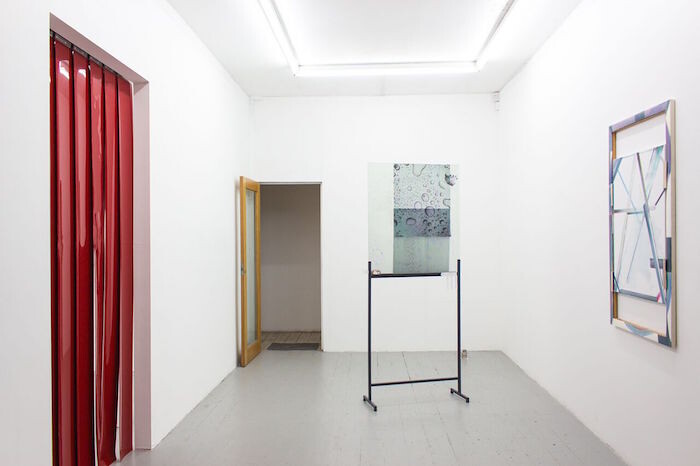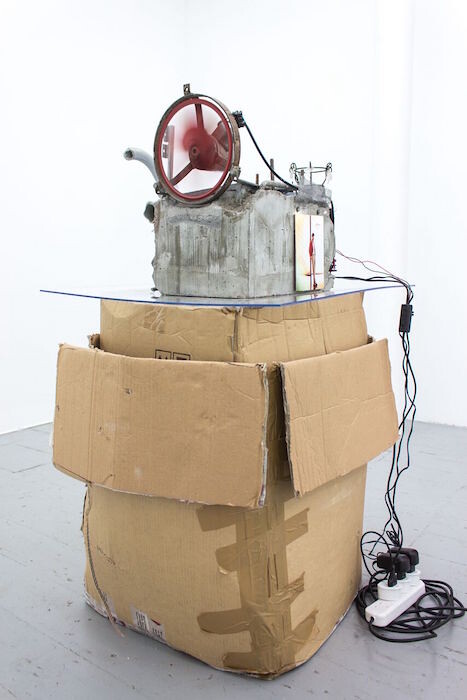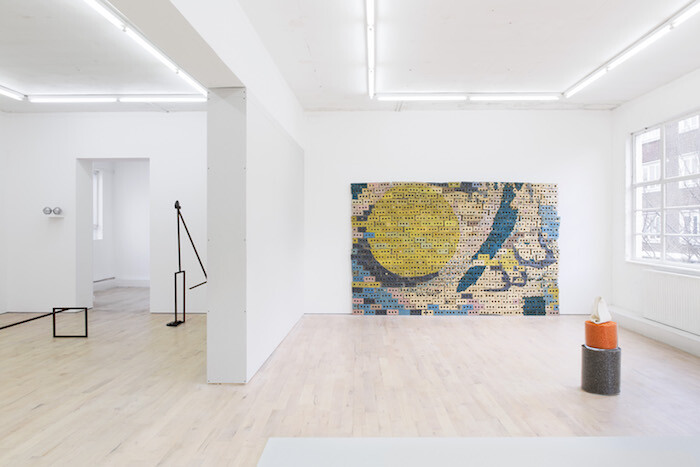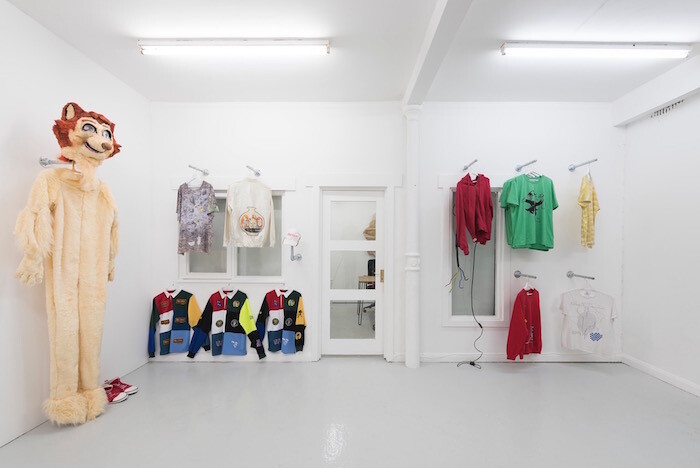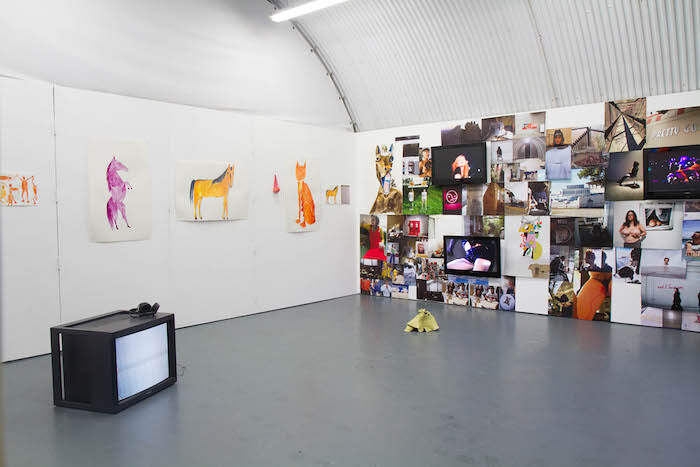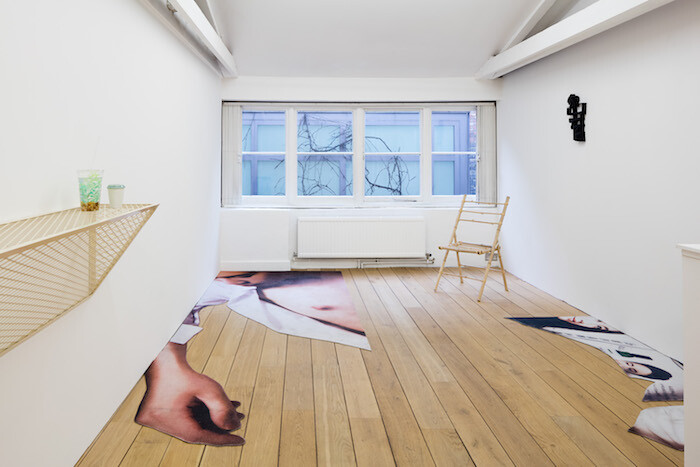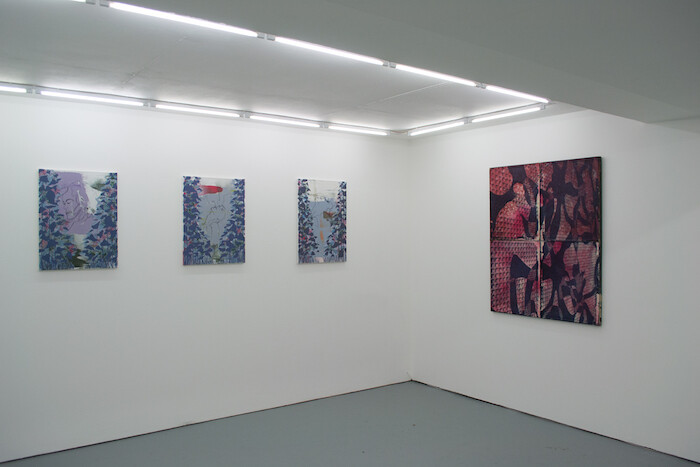When it comes to galleries, size does matter. With the big getting bigger, one London gallery suggested the small get together. Condo is a collaborative project between 24 galleries from 11 different cities housed in eight London spaces. Initiated by Vanessa Carlos of Carlos/Ishikawa, Condo’s premise is simple: each of the London galleries hosts between one and three visiting galleries. The invited galleries pay 600 pounds to cover costs and keep the full amount from any sales that result.
Condo is not an alternative to art fairs; it’s a new structure meant to allow galleries of a similar size to band together in order to promote their artists and share resources. The participating galleries have similar financial concerns and, as a result, comparable stakes in circumventing the usual flow of funds at an art fair, where the young galleries are encouraged to participate in special sections—displaying work that buys the fair (and them) cultural capital—while the big players bring their most commercial stock. The ethos of younger galleries, from the Lower East Side to East and Southeast London to Kreuzberg, is that they allow for experimentation. At Condo, the main novelty was the model itself, whereas the art looked like a series of uneven group shows.
What makes a group show in a gallery successful? Condo is not a test kitchen to perfect the recipe for the gallery group show—a summer delicacy!—but it does reveal that an affinity between galleries attempting to overcome a similar set of problems is not sufficient on its own to entail the production of meaning.
At Bethnal Green’s Supplement, Rachal Bradley (brought on by Gregor Staiger, Zurich) created a red PVC curtain for the threshold between the gallery’s two rooms. A simple gesture, the work (Dwelling, 2016) ties the exhibition together: pushing aside the cold plastic matter in order to cross the space introduces a sense of materiality and physicality that sets the scene for Philomene Pirecki’s digital print on glass from her ongoing Desire as a Form of Energy series (2015)—which Supplement also showed at Frieze New York last year—and the kinetic sculptures of Mathis Altmann (who shows with Truth & Consequences, Geneva). Combining cement and electricity, their weighty physical presence claims the center of the small room.
Similarly cohesive is Peckham’s Sunday Painter, only there the meeting with Glasgow’s Koppe Astner, Jaqueline Martins from São Paulo, and East London’s Seventeen brought about an intense feeling of sameness rather than a coming-together to make something new. Brazilian artist Ana Mazzei’s sculptures are aesthetically appealing in their combination of materials (wood, rubber, fabric), but look vaguely familiar: there is nothing to set them apart in what is essentially an all-sculpture show (the exception is a digital print from London-based Jala Wahid). Wahid’s plaster, petroleum, and food-coloring sculpture, Coco (2016) introduces another repetition in the show: a bodily abject. While her sculptures emulate sickly skin or body matter by way of industrial material, Débora Bolsoni (like Mazzei, represented by Martins) made a metal container for a beet soup that smelled like a cook’s worst nightmare while its title, Occasionally these people stop and drink the broth that they carry (2015), communicates this writer’s worst nightmare on encountering the work. The most memorable piece on view is Glasgow-based Laura Aldridge’s wall of ceramic bricks, which come together lightly to form a pastel abstract painting. Its title could have been used for the whole show: Display-scape no. 2: BRICKwork – A misleading, whole new way to do things (or so they say), 2015. If only.
One way to avoid the above-mentioned uniformity is to separate out the component parts of the show: also in East London, Carlos/Ishikawa built diagonal temporary walls to carve out space for their guests: New York’s Essex Street and Mathew, and Freymond-Guth from Zurich. Ironically, it looked like an art fair. More incongruous was the presentation of artists’s clothes Carlos/Ishikawa showed at the entrance to the space: with works by the likes of Ed Fornieles (Furry, 2016, a creepy fuzzy bunny costume, price upon request), Eloise Hawser (cotton jumper, edition of 25, 90 pounds), and Pilvi Takala (T-shirt printed with the monopoly man, edition of 25, 40 pounds). In a way, the artists’s clothes project smartly puts on display the status of art as commodity and exposes the free-for-all (especially all nonprofits) editions market. Still—one last reference to Frieze—remember the Gap Lounge?1
There was also a screening event, Condo Cinema, at Mile End’s Genesis Cinema on the day after the opening. The three-hour program included moving-image work by artists represented by the participating galleries. Maybe Condo Cinema is one reason why so little film and video was shown across the eight galleries: one exception was at South London’s Arcadia Missa, where A.L. Steiner created a site-specific video and found photography installation, Greatest Hits (2016), a culling of sexualized imagery (Madonna dancing, her hand against her pelvis, the screen hanging atop a photo of a woman with enormous, sagging breasts). Arcadia Missa is one of only a few galleries to present a text alongside the exhibition, but if the work is meant “not only to present the self but also generate conversations around visibility,” it fails. At Project Native Informant there are two video works—Under the Rain-Sounded Effect (2015) by Li Ran (Antenna Space, Shanghai) and Antigone (2016) by GOD (presented by Société, Berlin—but the videos are lost amidst a sea of what are best described as sellable paintings and photographs in an overcrowded gallery. It’s 2016, and “video” does not necessarily equate to “experimental,” but it does seem a bit out-of-touch to have 24 galleries come together in order to show paintings on the wall and sculptures on the floor. Condo is billed as a single exhibition across eight spaces; the fact that most galleries brought painting and sculpture lets slip the fact that the project is more of a marketplace than a town hall.
The narrative of Condo overlooks its constituent parts—the artworks—and these 24 galleries are in desperate need of a curator. In the past few years we’ve seen increasing numbers of curators working with commercial galleries, even ones the size of those involved in Condo. A project like this could have helped formalize and expand that role. Maybe a future Condo could be a real group show—displaying the works of artists represented by the participating galleries—only one that doesn’t try to disguise the fact that it is a commercial venture. It would be advantageous in the creation of a new structure by which to show work internationally, and in dispelling the smoke-and-mirrors way we talk about money in the art world.
The practical and ideological structure of Condo is more radical, more pressing than most of the work it puts on view. This is surprising given that the galleries involved are some of the most innovative around. Is it the season to talk economics, not ideas? The problems that Condo addresses—while particular to galleries of a certain financial model and scale—are also emblematic of the current moment, when escalating rents, the cost of art fairs, and of course, the endless recession squeeze midsize galleries, too. It’s hard to feel bad for the Chelsea galleries complaining about their 30,000-dollar rent. But it takes all sizes to create a healthy economy, and we all—artists, viewers, curators, writers, gallerists, collectors—have a stake in finding cures for this sickness. With curatorial oversight, and by taking another step away from preconceptions about what art-for-sale must be, Condo could be a new model, one that asserts a strong position both commercially and intellectually. For now, however, it’s hard to shake the feeling that the operation was successful, but the patient died.
Correction, 8 February 2016: The review mistakenly identified the photographs in A.L. Steiner’s installation Greatest Hits as found images. They are, in fact, a collage of photographs taken by the artist and form a kind of self-portrait.
The Gap Lounge at Frieze New York was the summation of a year-long partnership between the #normcore purveyor and art/lifestyle magazine Visionaire, an association which resulted in a series of limited-edition T-shirts by artists like Yoko Ono and Richard Philips, sold at the fair.
